IBFAN Statement on Cochrane Review on Commercial Ready-to-use Therapeutic Foods
IBFAN calls for a review of UN and other programmes using ‘commercial Ready-to-use Therapeutic Foods’ and ‘specially formulated foods’ following two new Cochrane reviews. Download
Two new systematic reviews [1,2] by the Cochrane Collaboration – recognized as the international benchmark for evaluating the effectiveness of health interventions – could not find evidence that commercial ready-to-use foods and lipid-based supplements are better than flour porridge prepared locally from enriched blended food for the treatment of severe and moderate acute malnutrition. IBFAN calls on UN bodies such as UNICEF and others to take account of these findings and to review recommendations that place undue emphasis on product-based fortified foods and supplements in programmes that address child malnutrition and survival.
In the first analysis of Ready to Use Therapeutic Foods (RUTFs) for the home treatment of children with Severe Acute Malnutrition (SAM), the Cochrane authors conclude “Current evidence is limited and, therefore, we cannot conclude that there is a difference between RUTF and flour porridge as home treatment for severely malnourished children, or between RUTF given in different daily amounts or with different ingredients. Either RUTF or standard diet such as flour porridge can be used to treat severely malnourished children at home. Decisions should be based on availability, cost and practicality. In order to determine the effects of RUTF, more high-quality studies are needed.”
The second Cochrane analysis reveals that giving Lipid-based nutrient supplements (LNS) does not reduce progression from Moderate Acute Malnutrition (MAM) to SAM and has no impact on child mortality. Whatever benefit emerged from the studies on MAM was in the form of weight gain and higher rates of recovery; however, a significant proportion of recovered infants and children relapse into MAM within six months.
Overall, there was not sufficient evidence to show significant added value for the treatment of MAM and SAM with the use of RUTFs and LNS. The MAM review notes that no research compares commercial with home-made foods and continued breastfeeding – the most sustainable approach to reducing the burden of child malnutrition.
A new Lancet Series on Maternal and Child Nutrition [3] was published around the same time as the Cochrane Reviews. IBFAN has always appreciated the Lancet’s regular appraisals of science on key issues of public health and nutrition and welcomes its call for nutrition to be higher on global and national agendas. However, the priority given to Ready-to Use-Foods and nutrition (micronutrient) supplements in the management of SAM and MAM is a concern. Eight of the 10 intervention packages for maternal and child nutrition that the Lancet propose scaling up involve nutrition products of some kind. This is despite the fact that for the prevention and treatment of SAM, the authors find inconclusive evidence of a reduction in deaths in facility-based management and “no significant differences in mortality’ in community settings – a finding consistent with the Cochrane review.
IBFAN recognizes that RUTFs and other commercial products are considered useful by many agencies in the treatment of SAM, largely because of their convenience. However, it is clear that their use must be limited and carefully managed. Convenience cannot be the only criterion. IBFAN is calling on UN bodies and policy makers to ensure that factors like robust evidence on efficacy, cost, long-term impact on nutrition, sustainability, and replacement of traditional feeding practices are considered before products are promoted.
Meanwhile the support and protection of breastfeeding coupled with adequate complementary feeding has received scant funding and attention. This is despite the large body of research that demonstrates it is the most effective and sustainable intervention to prevention malnutrition and to positively impact on child health and survival.
IBFAN believes this neglect is because breastfeeding protection is not just a matter of promotion or the delivery of products – but requires actions that tackle underlying factors, such as laws that both protect women’s rights to maternity provision at work [4] and stop misleading marketing practices of baby food companies. However, such actions conflict with the food industry’s top strategic priority, which is to expand markets for their processed foods, invariably by promoting them as better than traditional family foods.
The Cochrane reviews show the importance of careful evaluation of all evidence. Innovative ideas, however alluring, may have unintended consequences whose risks must be weighed against any benefits. In the interests of protecting the world’s most vulnerable citizens and their families, IBFAN is calling on UN bodies and policy makers to ensure that policies are made by those who have no financial interest in the outcome and that decisions about packages of care are based on evidence that is as free as possible of conflicts of interest. Several key references used in the current guidelines and referenced in the Lancet series were either funded by or carried out by those who have a financial interest in the outcome.
———————————————————————————————————————————————————————-
-
Schoonees A, Lombard M, Musekiwa A, Nel E, Volmink J. Ready-to-use therapeutic food for home-based treatment of severe acute malnutrition in children from six months to five years of age. Cochrane Database of Systematic Reviews 2013, Issue 6. Art. No.: CD009000. DOI: 10.1002/14651858.CD009000.pub2 http://onlinelibrary.wiley.com/doi/10.1002/14651858.CD009000.pub2/abstract -
Lazzerini M, Rubert L, Pani P. Specially formulated foods for treating children with moderate acute malnutrition in low- and middle-income countries. Cochrane Database of Systematic Reviews 2013, Issue 6. Art. No.: CD009584. DOI:10.1002/14651858.CD009584.pub2 http://onlinelibrary.wiley.com/doi/10.1002/14651858.CD009584.pub2/abstract -
Bhutta ZA et al. Evidence-based interventions for improvement of maternal and child nutrition: what can be done and at what cost? Lancet Published online June 6, 2013 http://www.thelancet.com/series/maternal-and-child-nutrition -
WHO Bulletin. Breastfeeding policy – a globally comparative analysis: “A greater percentage of women practice exclusive breastfeeding in countries where laws guarantee breastfeeding breaks at work. If these findings are confirmed in longitudinal studies, health outcomes could be improved by passing legislation on breastfeeding breaks in countries that do not yet ensure the right to breastfeed.” http://www.who.int/bulletin/volumes/91/6/12-109363.pdf

